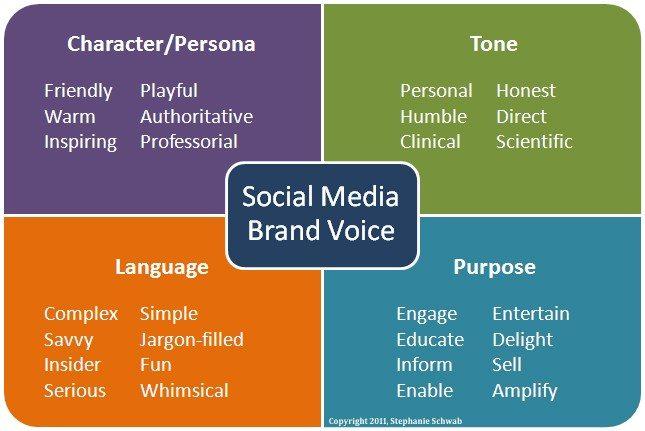Creating a Brand Voice That Connects: Your Ultimate Guide
In today’s crowded marketplace, creating a brand voice that connects with your audience is more important than ever. Your brand voice is the unique personality and tone you convey through every piece of content, message, or interaction. When crafted effectively, it not only distinguishes your business but also builds trust, loyalty, and emotional resonance-key ingredients for long-term success.
What Is a Brand Voice and Why Does It Matter?
A brand voice is the consistent expression of your brand’s personality through communication. Think of it as the “voice” your brand speaks in emails, social media, product descriptions, ads, and even customer service conversations. It reflects your brand values, culture, and audience connection.
Why is having a strong brand voice crucial?
- Builds recognition: A consistent voice makes your brand easily identifiable across multiple platforms.
- Creates emotional connection: It resonates with your target audience’s feelings and values.
- Drives loyalty: Customers tend to trust and engage more with brands that speak their language.
- Supports marketing consistency: Ensures uniform messaging that reinforces your brand identity.
Key Elements of a Connecting Brand Voice
When shaping your brand voice, focus on these core elements to ensure it truly connects with your target audience:
- Authenticity: Be genuine and true to your brand’s values and persona.
- Clarity: Communicate in a clear and understandable way, avoiding jargon.
- Emotion: Use language that evokes feelings and builds rapport.
- Consistency: Apply the same tone and style across all content and channels.
- Adaptability: Adjust your tone slightly depending on the platform or audience segment.
Benefits of Crafting a Strong Brand Voice
| Benefit | Description |
|---|---|
| Enhanced brand loyalty | Customers are more likely to return and engage with brands they relate to emotionally. |
| Recognition and differentiation | Your brand stands out among competitors in a crowded market. |
| Improved marketing ROI | Consistent messaging leads to higher conversion rates and better campaign performance. |
| Stronger internal culture | A clear voice helps guide employees and fosters alignment within your team. |
How to Create a Brand Voice That Connects: Step-by-Step Guide
1. Understand Your Target Audience
Start by researching your audience’s demographics, preferences, challenges, and communication styles. What language do they use? What motivates them? This insight ensures your voice resonates authentically.
2. Define Your Brand’s Personality
Imagine your brand as a person. Is it playful or professional? Warm or authoritative? Friendly or quirky? Use adjectives that capture this personality to guide your voice creation.
3. Develop Your Tone Guidelines
While your personality stays consistent, your tone can shift depending on context. For example, your tone might be:
- Encouraging in customer support messages
- Inspirational in marketing campaigns
- Informative in blog posts
Outline examples to clarify how your tone changes based on scenarios.
4. Create a Brand Voice Chart
A brand voice chart helps document and communicate your voice internally. Consider including:
| Voice Attribute | Do’s | Don’ts |
|---|---|---|
| Friendly | Use warm, welcoming language | Avoid overly formal or cold phrasing |
| Clear | Keep sentences simple and direct | Don’t use jargon or complicated words |
| Confident | Assert value and expertise calmly | Don’t sound boastful or arrogant |
5. Train Your Team and Monitor Consistency
Share your voice guidelines with all content creators, social media managers, customer support reps, and other team members. Regularly audit content to ensure voice consistency and make adjustments based on feedback and evolving audience needs.
Practical Tips for Maintaining a Relatable Brand Voice
- Use storytelling: Stories build human connections and make your brand memorable.
- Engage in conversations: Respond to comments and messages keeping your voice consistent.
- Leverage user-generated content: Showcase real customer language to deepen authenticity.
- Stay updated: Periodically revise your voice to reflect cultural shifts and audience changes.
- Use voice and style guides: Keep a living document easily accessible to your team.
Case Study: How Mailchimp Created a Distinct Brand Voice
Mailchimp, the email marketing platform, is renowned for its approachable and witty brand voice. Their tone is casual, friendly, and playful, making complex marketing software feel accessible to small businesses and beginners.
Key takeaways from Mailchimp’s strategy:
- They use humor strategically to entertain and disarm.
- The voice remains helpful and clear, fostering trust.
- Consistency across their website, emails, and support channels reinforces their identity.
By developing such a relatable brand voice, Mailchimp has connected deeply with their audience, boosting loyalty and brand recall.
Your Brand Voice Is the Heartbeat of Your Business
Creating a brand voice that connects isn’t just a marketing task-it’s an ongoing commitment to understanding and speaking to your audience in a way that reflects who you truly are. This voice builds a bridge from your brand to your customers’ hearts and minds, fostering relationships that grow over time.
Remember, consistency, authenticity, and empathy lie at the core of a voice that truly resonates. Start now by exploring your audience, defining your personality, and documenting your unique tone to create a brand voice that not only talks but truly connects.
Ready to build a brand voice that transforms your business? Begin today and witness how compelling communication can make all the difference.











